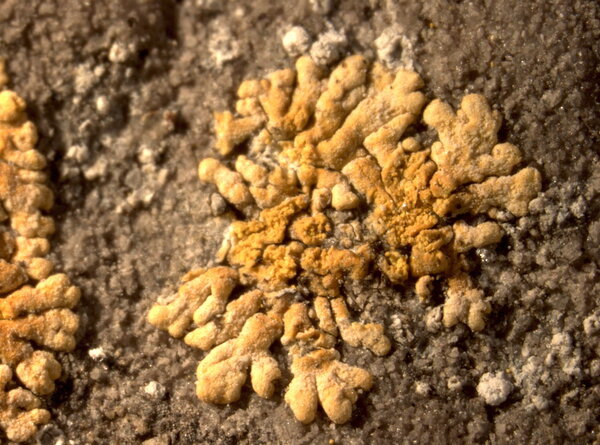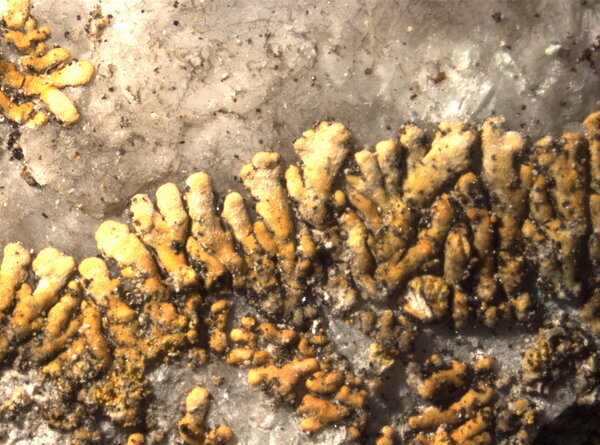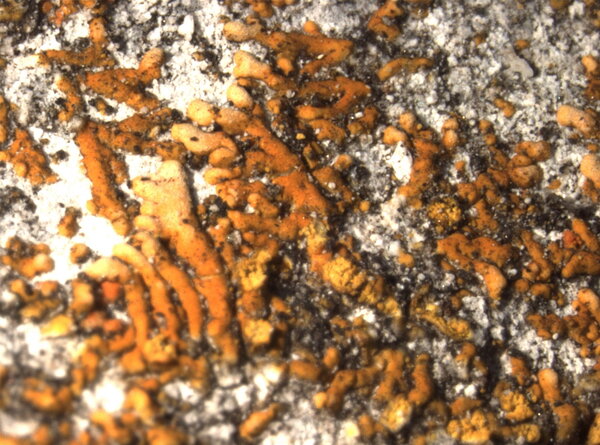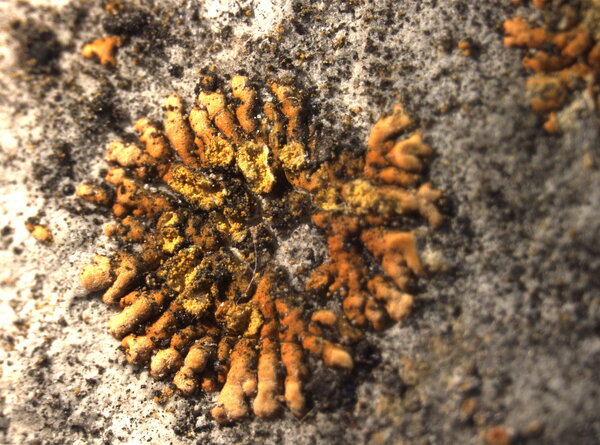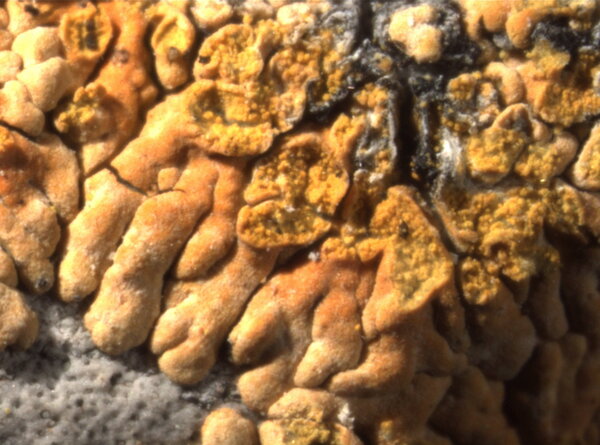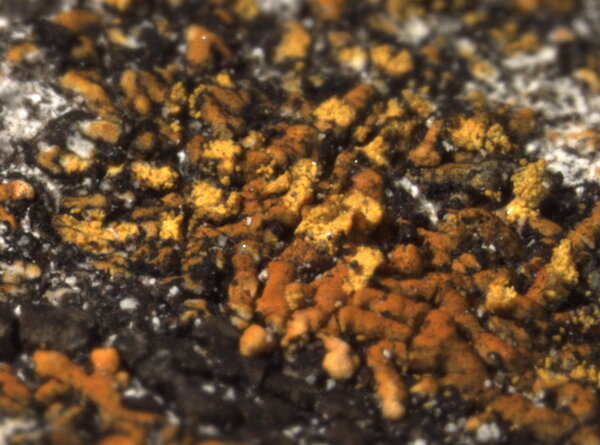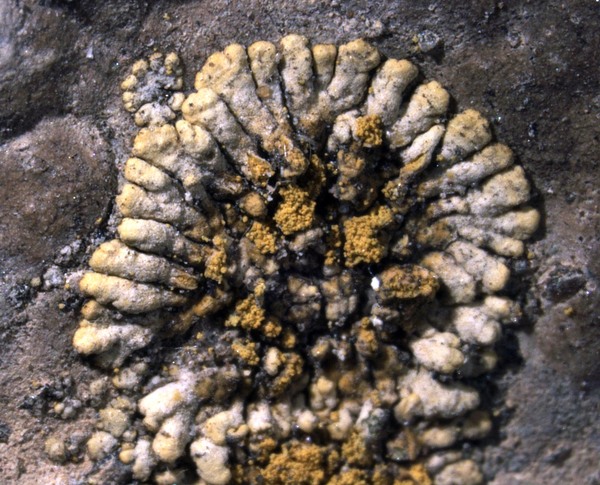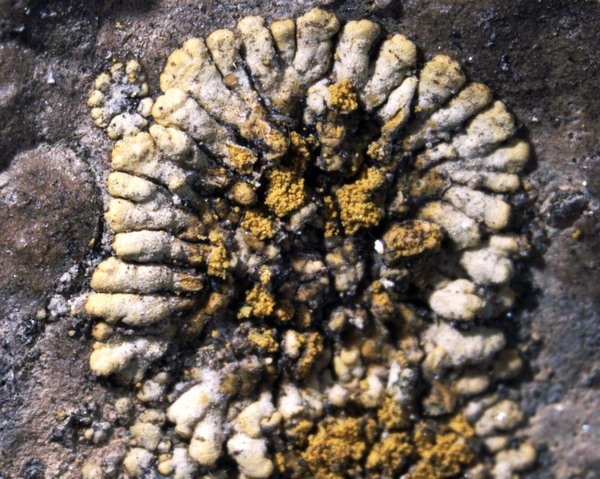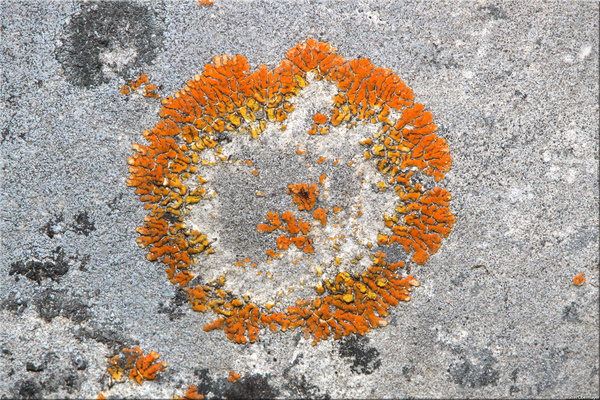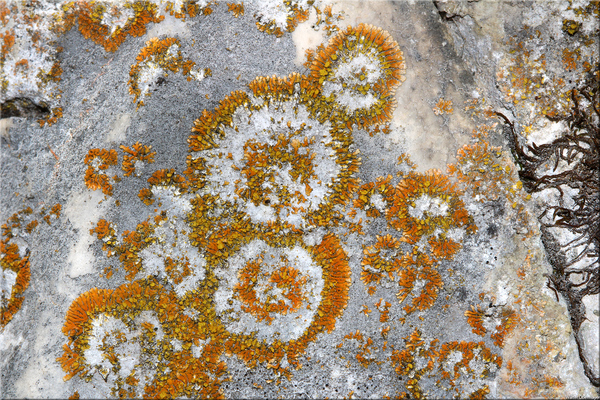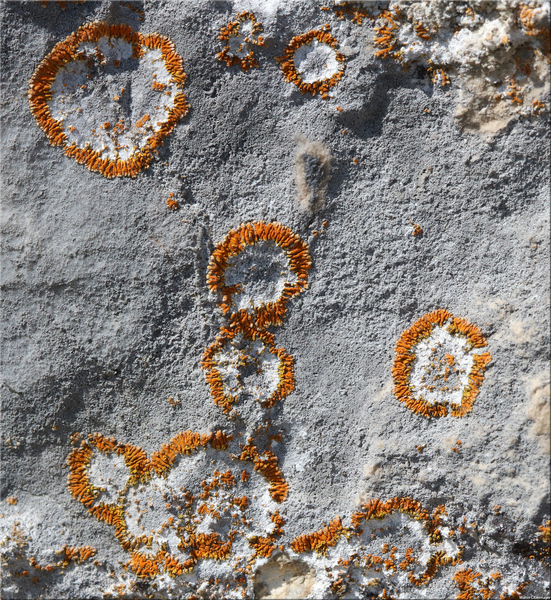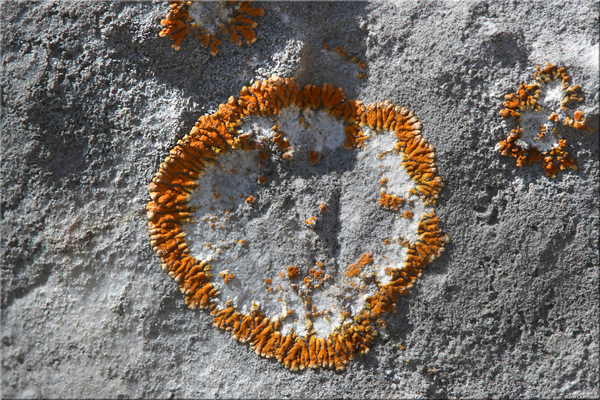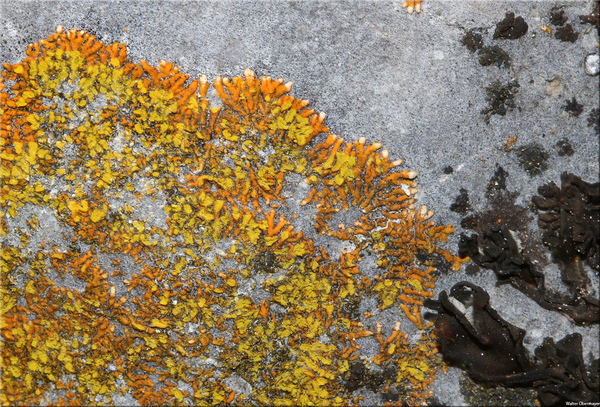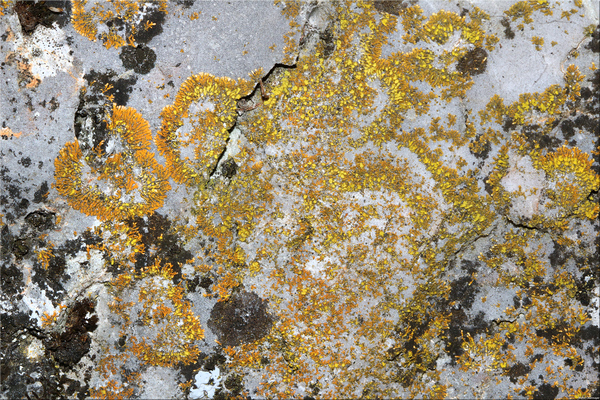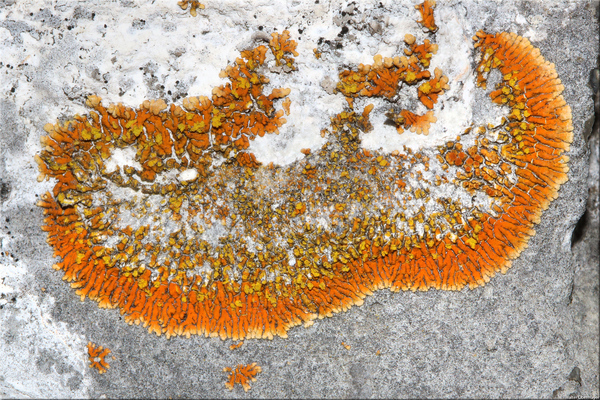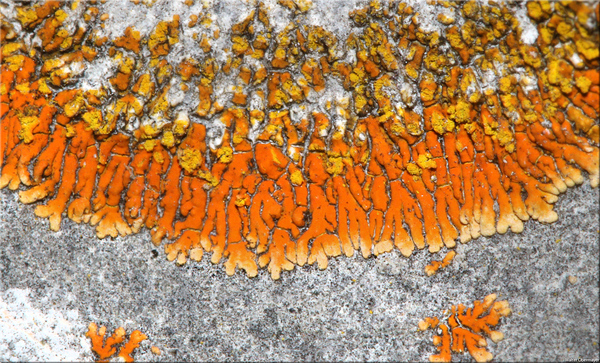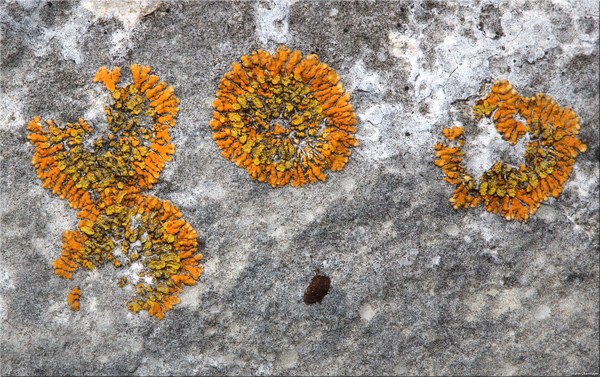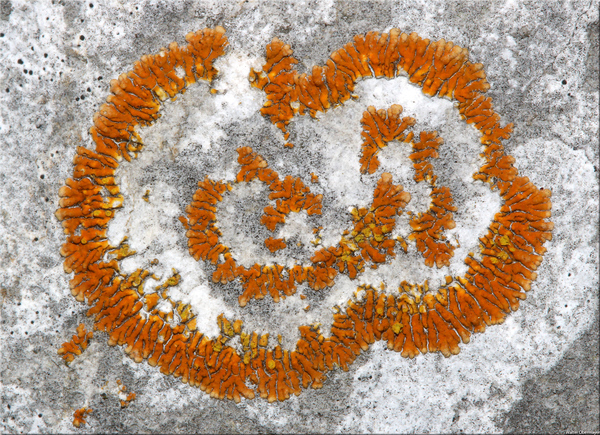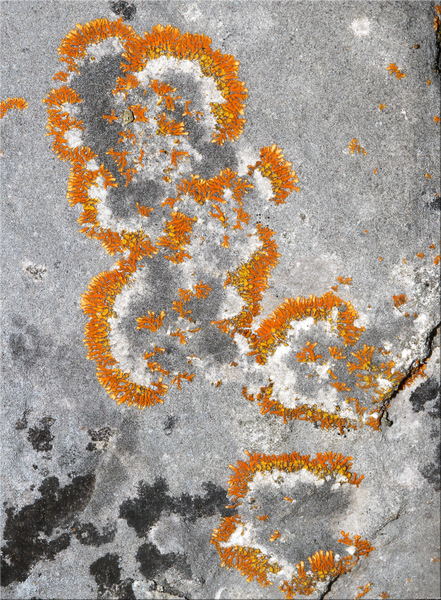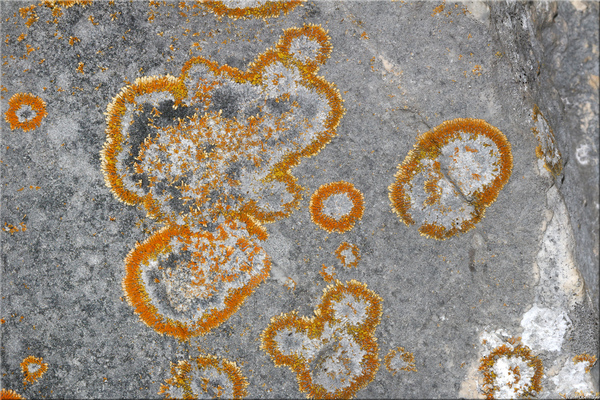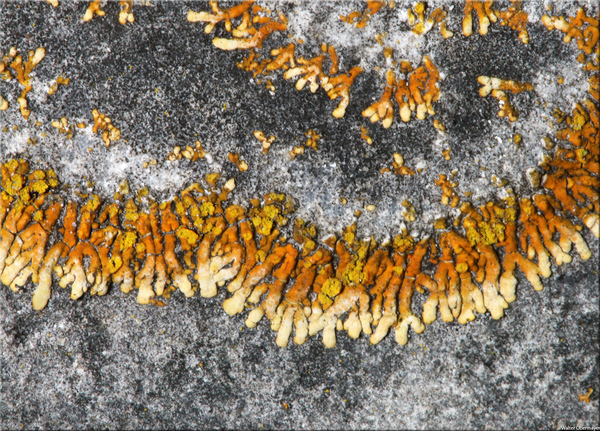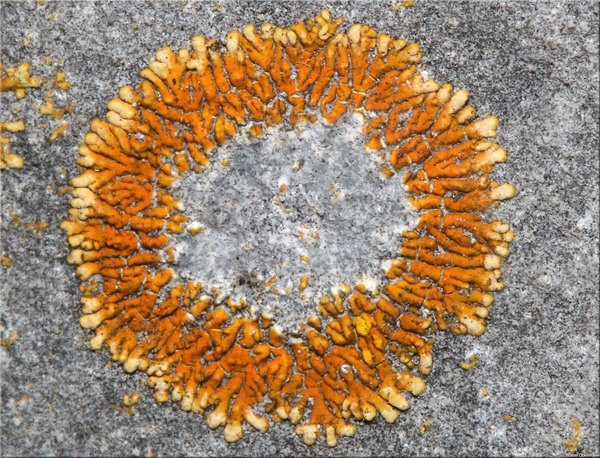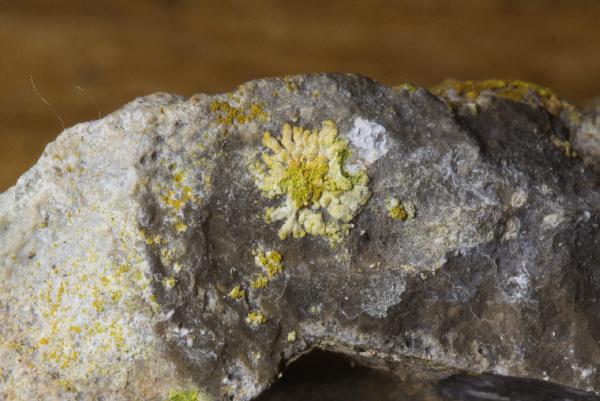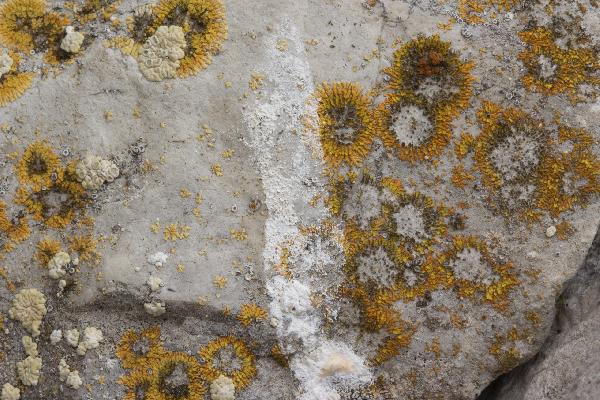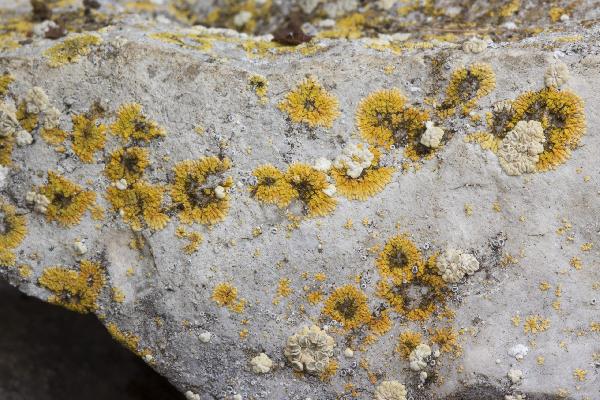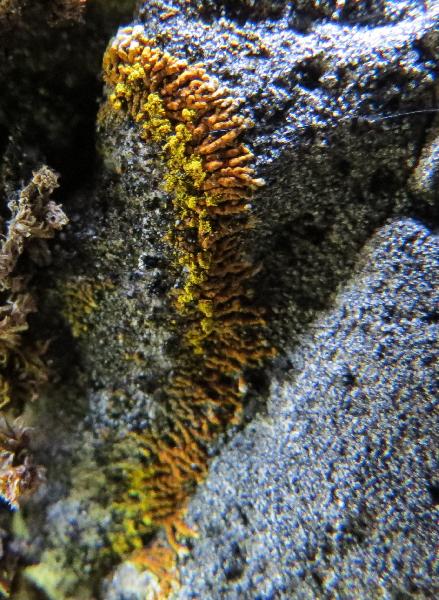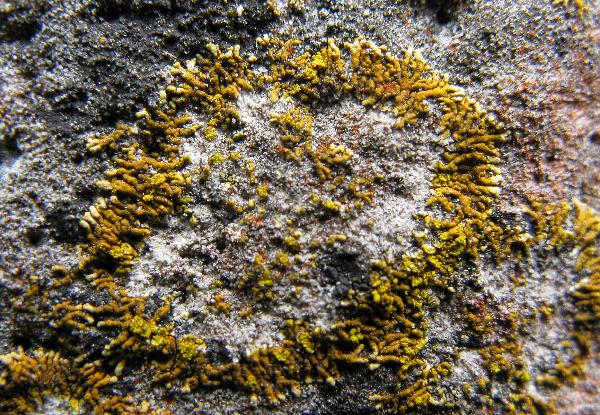Leproplaca cirrochroa (Ach.) Arup, Frödén & Søchting
in Arup & al., Nord. J. Bot., 31: 72, 2013. Basionym: Lecanora cirrochroa Ach. - Syn. Meth. Lich.: 181, 1814.
Synonyms: Amphiloma cirrochroum (Ach.) Körb.; Caloplaca cirrochroa (Ach.) Th. Fr.; Gasparrinia cirrochroa (Ach.) Stein; Lecanora murorum var. cirrochroa (Ach.) Rabenh.; Physcia callopisma var. cirrochroa (Ach.) A. Massal.; Physcia cirrochroa (Ach.) Arnold; Placodium cirrochroum (Ach.) Rabenh.
Distribution: N - VG (Navarro-Rosinés & Roux 1994), Frl (Brackel 2013), Ven (Caniglia & al. 1999, Nascimbene & Caniglia 2003c, Nascimbene 2005c, 2008c, Nascimbene & Marini 2007), TAA (Nascimbene 2005b, 2008b, Nascimbene & al. 2006, 2022), Lomb, Piem (Isocrono & al. 2004, Morisi 2005), VA (Piervittori & Isocrono 1999), Emil (Fariselli & al. 2020), Lig (Giordani & al. 2025). C - Tosc, Marc (Nimis & Tretiach 1999), Umb (Nimis & Tretiach 1999, Ravera & al. 2006), Laz, Abr (Nimis & Tretiach 1999), Mol (Nimis & Tretiach 1999, Caporale & al. 2008), Sar. S - Camp (Aprile & al. 2003b, Nimis & Tretiach 2004, Garofalo & al. 2010), Pugl, Bas (Potenza 2006, Potenza & Fascetti 2012), Cal (Puntillo 2011), Si (Grillo 1998, Grillo & Caniglia 2004).
Description: Thallus crustose-placodioid, episubstratic, yellow to orange, closely attached, forming regular to irregular, up to 2.5 cm wide rosettes, the older, central parts often falling off. Lobes to 3 mm long, 0.2-0.5 mm wide, flat to moderately convex, well-separated for most of their length, pruinose and expanded at tips, with laminal, ulcerose, bright lemon yellow, round, sometimes confluent soralia bearing farinose soredia. Cortex paraplectenchymatous, with granules insoluble in K; medulla prosoplectenchymatous. Apothecia rather rare, in the areolate-verrucose central parts of the rosettes, adnate, 0.4-0.8 mm across, orange, with a more or less persistent, often granulose, orange thalline margin. Epithecium orange, with a granular epipsamma reacting K+ purple-red; hymenium colourless, 65-80 μm high; paraphyses simple to forked, 2-2.5 μm thick at base, with 1-3, swollen, globose, up to 5.5 μm wide apical cells; hypothecium colourless. Asci 8-spored, clavate, functionally unitunicate, apically thickened with a broad internal beak, the inner part of apex and external cap I+ blue, Teloschistes-type. Ascospores 2-celled, polarilocular, hyaline, ellipsoid, thin-walled, 10-16 x 5-7 µm, the equatorial thickening (“septum”) 2.5-4.5 µm, less than 1/3 of spore length. Photobiont chlorococcoid. Spot tests: thallus, soredia and apothecia K+ purple-red, C-, KC-, P-, UV+ orange. Chemistry: parietin (major), fallacinal, emodin, teloschistin and parietinic acid (minor), corresponding with chemosyndrome A of Søchting (1997).Note: a mainly temperate, probably holarctic species found on hard limestone and dolomite in rather shaded and sheltered situations, often on faces seldom wetted by rain. Some records from the Alps could refer to the superficially similar L. proteus.
Growth form: Crustose placodiomorph
Substrata: rocks
Photobiont: green algae other than Trentepohlia
Reproductive strategy: mainly asexual, by soredia, or soredia-like structures (e.g. blastidia)
In underhangs rarely wetted by rain
Commonnes-rarity: (info)
Alpine belt: very rare
Subalpine belt: rather rare
Oromediterranean belt: rare
Montane belt: rather common
Submediterranean belt: rare
Padanian area: extremely rare
Humid submediterranean belt: rather rare
Humid mediterranean belt: very rare
Dry mediterranean belt: absent
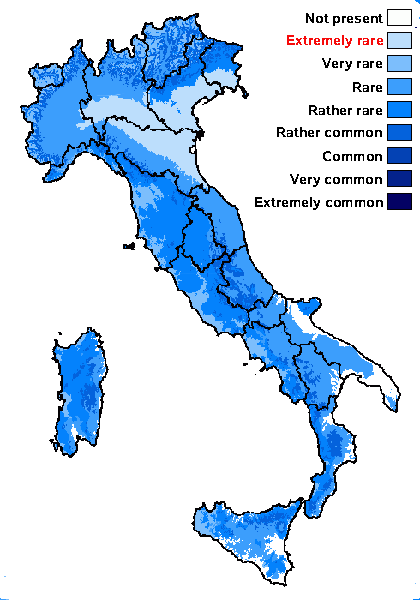
Predictive model
Herbarium samples
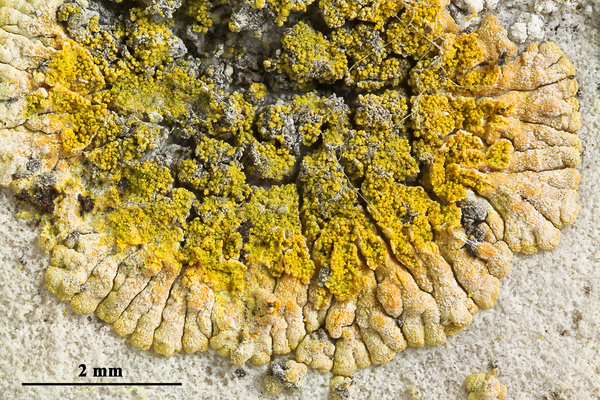

Felix Schumm - CC BY-SA 4.0
[19685], Germany, Baden-Württemberg, Schwäbische Alb, westlich von Ochsenwang, auf Kalkfelsen im Randecker Maar, 48.57156° N, 9.52611° E, 708 m, TK 7423. Leg et det. F. Schumm, 18.08.2017.
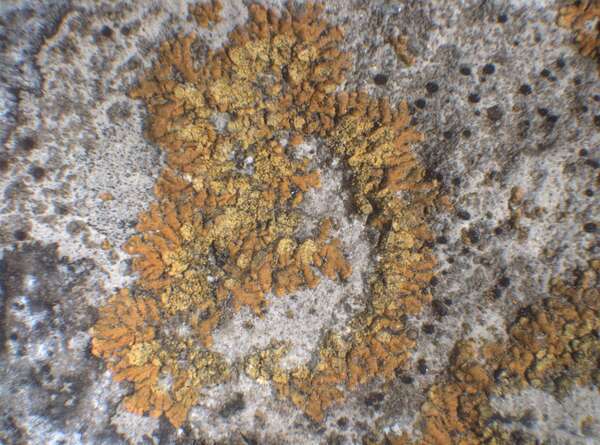

P.L. Nimis; Owner: Department of Life Sciences, University of Trieste
Herbarium: TSB (12964)
2003/03/11


P.L. Nimis; Owner: Department of Life Sciences, University of Trieste
Herbarium: TSB (33637)
2003/03/11
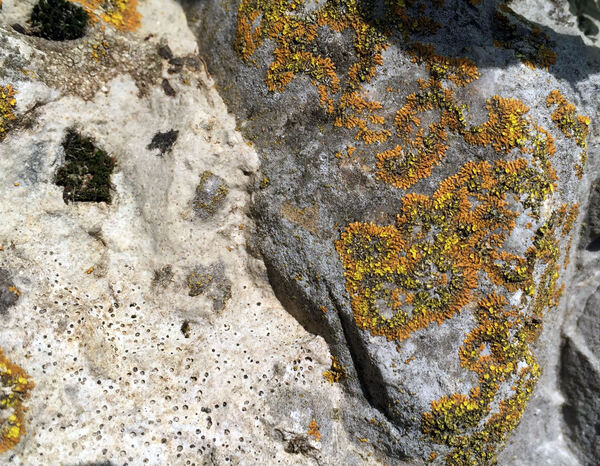

P.L. Nimis; Owner: Department of Life Sciences, University of Trieste
Italy, Friuli Venezia Giulia, Udine, Ampezzo Carnico, 650 m
09.09.2016
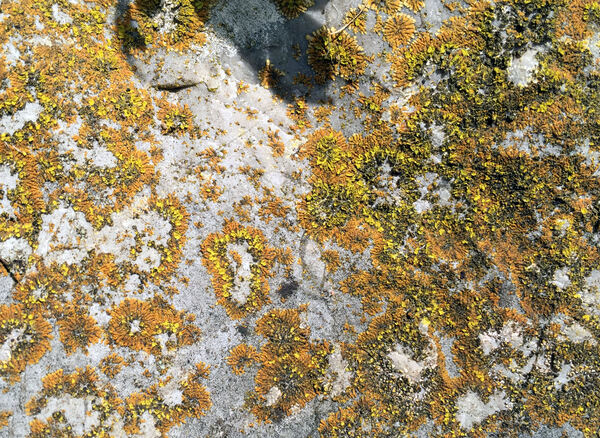

P.L. Nimis; Owner: Department of Life Sciences, University of Trieste
Italy, Friuli Venezia Giulia, Udine, Ampezzo Carnico, 650 m
09.09.2016
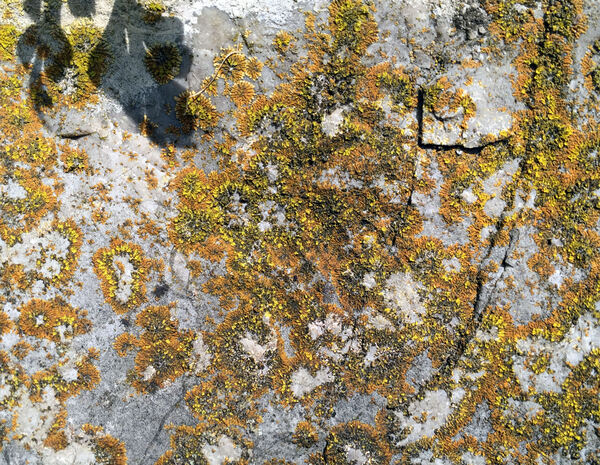

P.L. Nimis; Owner: Department of Life Sciences, University of Trieste
Italy, Friuli Venezia Giulia, Udine, Ampezzo Carnico, 650 m
09.09.2016
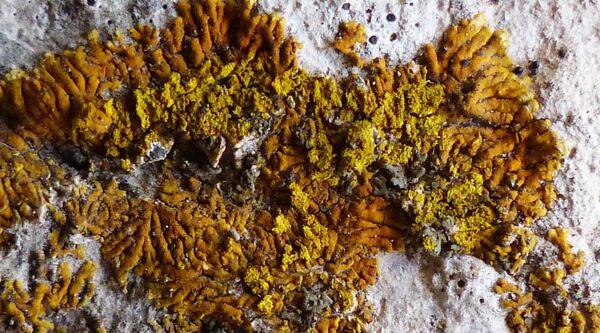

Andrea Moro; Owner: Department of Life Sciences, University of Trieste
italy, Friuli Venezia Giulia, Trieste, Trieste Karst near Borgo Grotta Gigante
16/02/2017
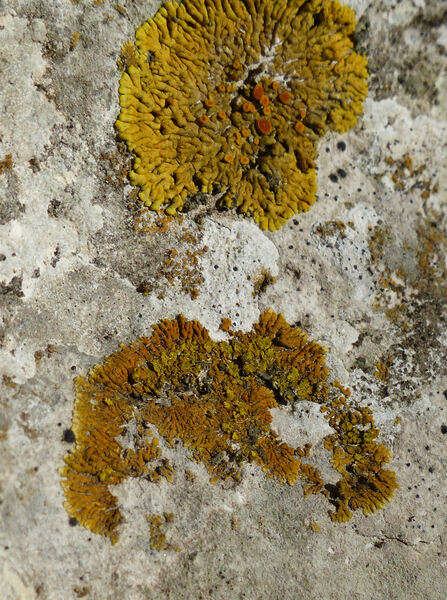

Andrea Moro; Owner: Department of Life Sciences, University of Trieste
italy, Friuli Venezia Giulia, Trieste, Trieste Karst near Borgo Grotta Gigante
16/02/2017
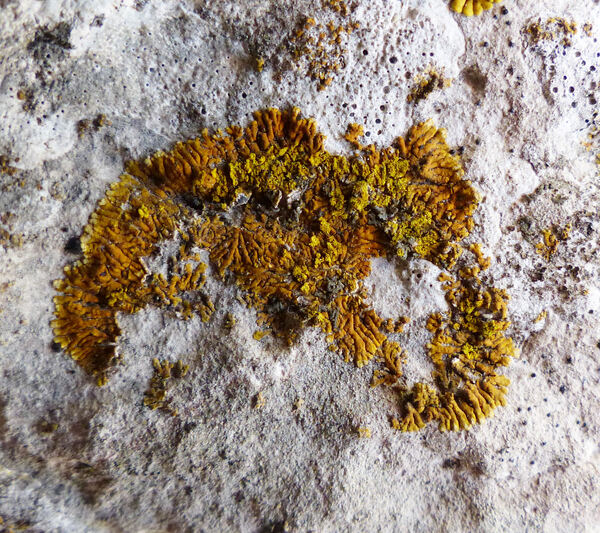

Andrea Moro; Owner: Department of Life Sciences, University of Trieste
italy, Friuli Venezia Giulia, Trieste, Trieste Karst near Borgo Grotta Gigante
16/02/2017
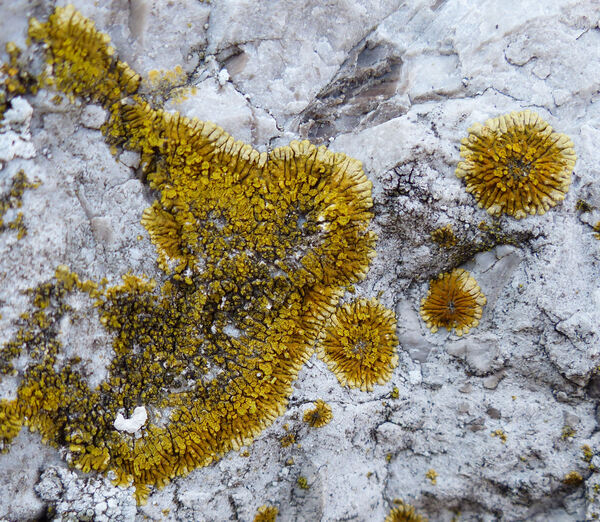

Andrea Moro; Owner: Department of Life Sciences, University of Triedte
Italy, Friuli Venezia Giulia, Trieste, Trieste Karst, Rocca di Monrupino
20/02/2017
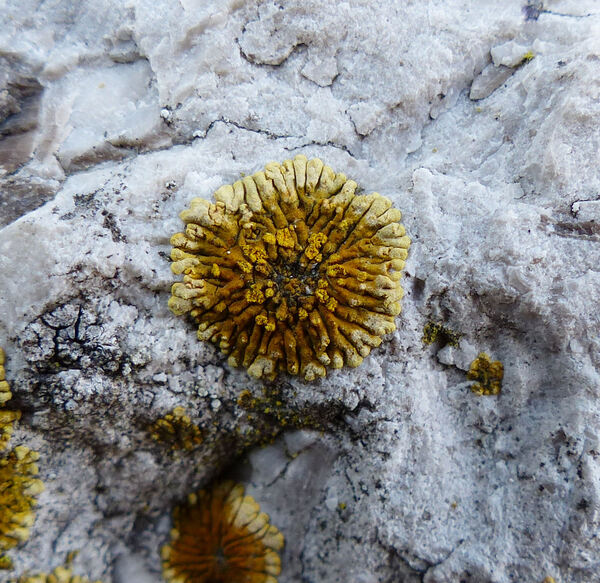

Andrea Moro; Owner: Department of Life Sciences, University of Triedte
Italy, Friuli Venezia Giulia, Trieste, Trieste Karst, Rocca di Monrupino
20/02/2017
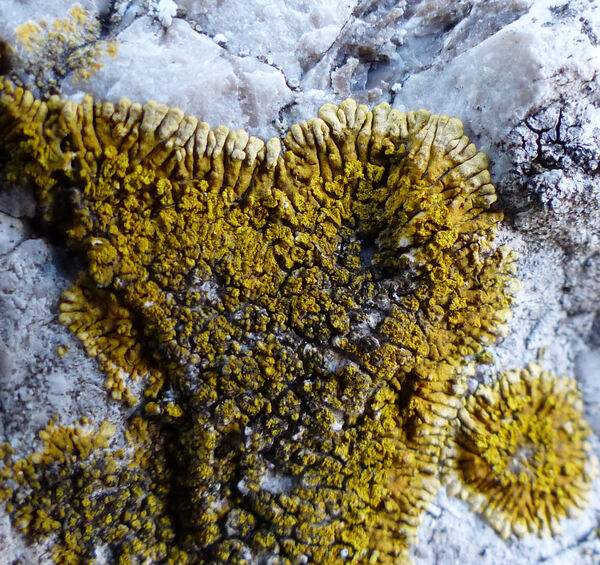

Andrea Moro; Owner: Department of Life Sciences, University of Triedte
Italy, Friuli Venezia Giulia, Trieste, Trieste Karst, Rocca di Monrupino
20/02/2017
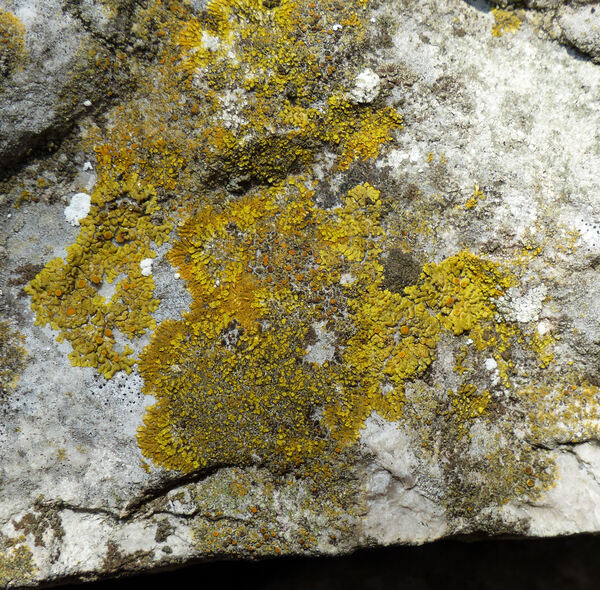

Andrea Moro; Owner: Department of Life Sciences, University of Triedte
Italy, Friuli Venezia Giulia, Trieste, Trieste Karst, Rocca di Monrupino
20/02/2017
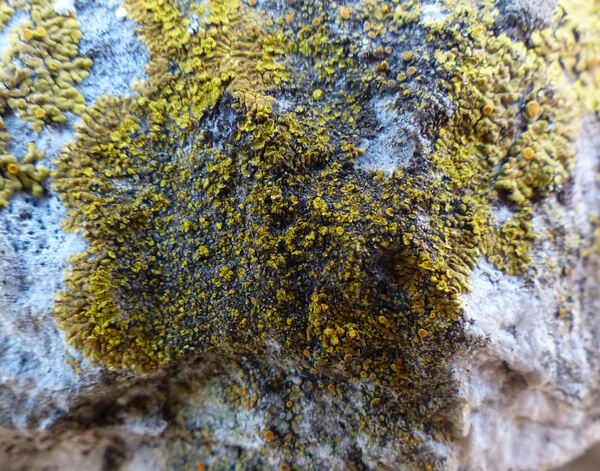

Andrea Moro; Owner: Department of Life Sciences, University of Triedte
Italy, Friuli Venezia Giulia, Trieste, Trieste Karst, Rocca di Monrupino
20/02/2017
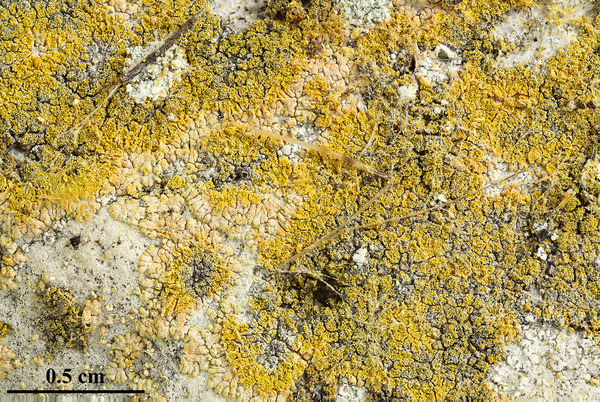

Felix Schumm - CC BY-SA 4.0
[19685], Germany, Baden-Württemberg, Schwäbische Alb, westlich von Ochsenwang, auf Kalkfelsen im Randecker Maar, 48.57156° N, 9.52611° E, 708 m, TK 7423. Leg et det. F. Schumm, 18.08.2017.
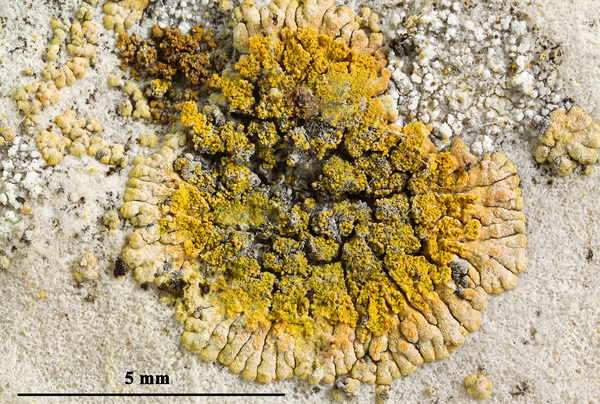

Felix Schumm - CC BY-SA 4.0
[19685], Germany, Baden-Württemberg, Schwäbische Alb, westlich von Ochsenwang, auf Kalkfelsen im Randecker Maar, 48.57156° N, 9.52611° E, 708 m, TK 7423. Leg et det. F. Schumm, 18.08.2017.
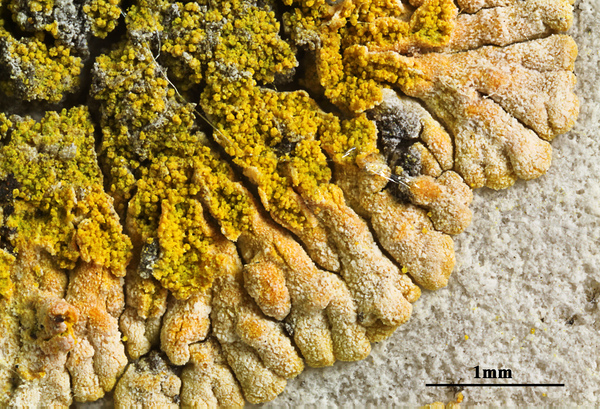

Felix Schumm - CC BY-SA 4.0
[19685], Germany, Baden-Württemberg, Schwäbische Alb, westlich von Ochsenwang, auf Kalkfelsen im Randecker Maar, 48.57156° N, 9.52611° E, 708 m, TK 7423. Leg et det. F. Schumm, 18.08.2017.


Felix Schumm - CC BY-SA 4.0
[19685], Germany, Baden-Württemberg, Schwäbische Alb, westlich von Ochsenwang, auf Kalkfelsen im Randecker Maar, 48.57156° N, 9.52611° E, 708 m, TK 7423. Leg et det. F. Schumm, 18.08.2017.
Growth form: Crustose placodiomorph
Substrata: rocks
Photobiont: green algae other than Trentepohlia
Reproductive strategy: mainly asexual, by soredia, or soredia-like structures (e.g. blastidia)
In underhangs rarely wetted by rain
Commonnes-rarity: (info)
Alpine belt: very rare
Subalpine belt: rather rare
Oromediterranean belt: rare
Montane belt: rather common
Submediterranean belt: rare
Padanian area: extremely rare
Humid submediterranean belt: rather rare
Humid mediterranean belt: very rare
Dry mediterranean belt: absent

Predictive model
| Herbarium samples |


Felix Schumm - CC BY-SA 4.0
[19685], Germany, Baden-Württemberg, Schwäbische Alb, westlich von Ochsenwang, auf Kalkfelsen im Randecker Maar, 48.57156° N, 9.52611° E, 708 m, TK 7423. Leg et det. F. Schumm, 18.08.2017.


P.L. Nimis; Owner: Department of Life Sciences, University of Trieste
Herbarium: TSB (12964)
2003/03/11


P.L. Nimis; Owner: Department of Life Sciences, University of Trieste
Herbarium: TSB (33637)
2003/03/11


P.L. Nimis; Owner: Department of Life Sciences, University of Trieste
Italy, Friuli Venezia Giulia, Udine, Ampezzo Carnico, 650 m
09.09.2016


P.L. Nimis; Owner: Department of Life Sciences, University of Trieste
Italy, Friuli Venezia Giulia, Udine, Ampezzo Carnico, 650 m
09.09.2016


P.L. Nimis; Owner: Department of Life Sciences, University of Trieste
Italy, Friuli Venezia Giulia, Udine, Ampezzo Carnico, 650 m
09.09.2016


Andrea Moro; Owner: Department of Life Sciences, University of Trieste
italy, Friuli Venezia Giulia, Trieste, Trieste Karst near Borgo Grotta Gigante
16/02/2017


Andrea Moro; Owner: Department of Life Sciences, University of Trieste
italy, Friuli Venezia Giulia, Trieste, Trieste Karst near Borgo Grotta Gigante
16/02/2017


Andrea Moro; Owner: Department of Life Sciences, University of Trieste
italy, Friuli Venezia Giulia, Trieste, Trieste Karst near Borgo Grotta Gigante
16/02/2017


Andrea Moro; Owner: Department of Life Sciences, University of Triedte
Italy, Friuli Venezia Giulia, Trieste, Trieste Karst, Rocca di Monrupino
20/02/2017


Andrea Moro; Owner: Department of Life Sciences, University of Triedte
Italy, Friuli Venezia Giulia, Trieste, Trieste Karst, Rocca di Monrupino
20/02/2017


Andrea Moro; Owner: Department of Life Sciences, University of Triedte
Italy, Friuli Venezia Giulia, Trieste, Trieste Karst, Rocca di Monrupino
20/02/2017


Andrea Moro; Owner: Department of Life Sciences, University of Triedte
Italy, Friuli Venezia Giulia, Trieste, Trieste Karst, Rocca di Monrupino
20/02/2017


Andrea Moro; Owner: Department of Life Sciences, University of Triedte
Italy, Friuli Venezia Giulia, Trieste, Trieste Karst, Rocca di Monrupino
20/02/2017


Felix Schumm - CC BY-SA 4.0
[19685], Germany, Baden-Württemberg, Schwäbische Alb, westlich von Ochsenwang, auf Kalkfelsen im Randecker Maar, 48.57156° N, 9.52611° E, 708 m, TK 7423. Leg et det. F. Schumm, 18.08.2017.


Felix Schumm - CC BY-SA 4.0
[19685], Germany, Baden-Württemberg, Schwäbische Alb, westlich von Ochsenwang, auf Kalkfelsen im Randecker Maar, 48.57156° N, 9.52611° E, 708 m, TK 7423. Leg et det. F. Schumm, 18.08.2017.


Felix Schumm - CC BY-SA 4.0
[19685], Germany, Baden-Württemberg, Schwäbische Alb, westlich von Ochsenwang, auf Kalkfelsen im Randecker Maar, 48.57156° N, 9.52611° E, 708 m, TK 7423. Leg et det. F. Schumm, 18.08.2017.


 INDEX FUNGORUM
INDEX FUNGORUM
 GBIF
GBIF
 DOLICHENS
DOLICHENS

